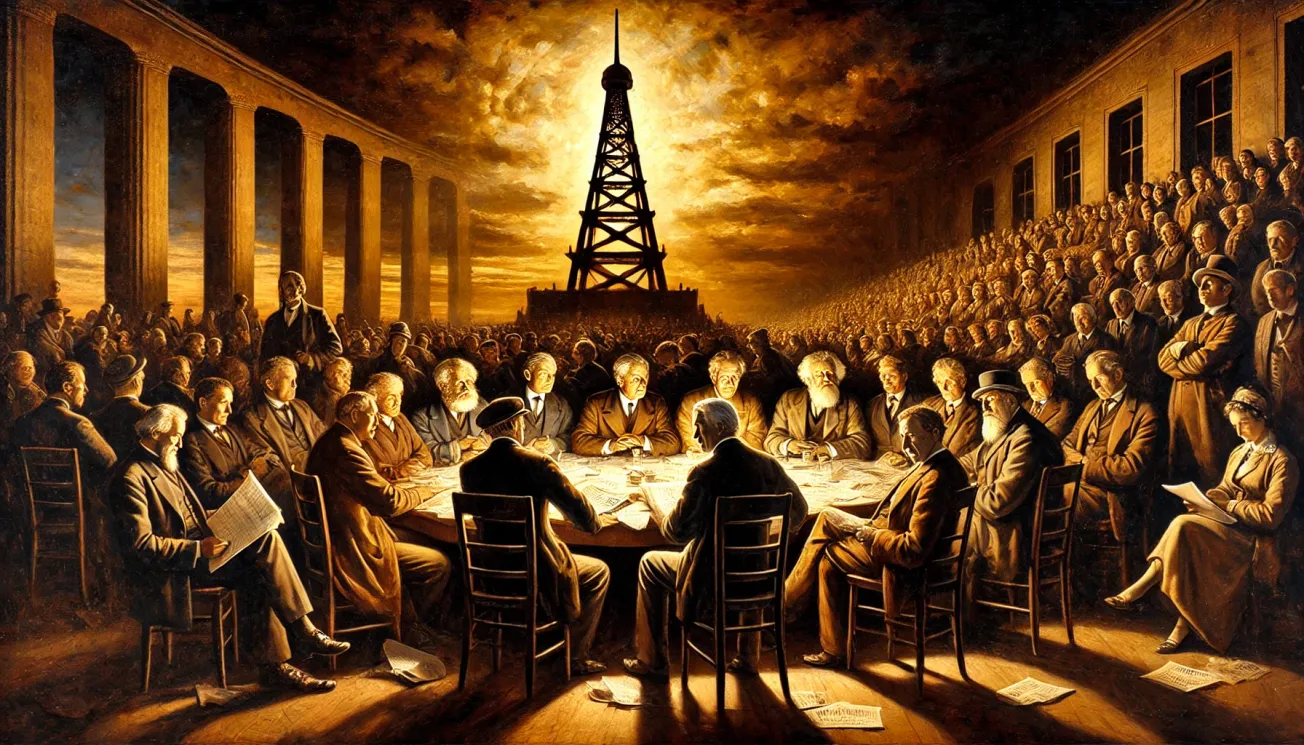Media organizations don’t just report the news—they shape narratives, set agendas, and structure public discourse. In this deep-dive analysis, we apply power dynamics theory to National Public Radio (NPR), dissecting how it operates within the U.S. media ecosystem.
Rather than focusing on surface-level claims of bias, this article deconstructs NPR’s funding model, institutional alliances, audience dependencies, and leverage points to reveal the underlying forces that shape its editorial stance. We examine NPR’s role as a gatekeeper of professional-class discourse, its ability to influence narratives through agenda-setting rather than overt advocacy, and the strategic vulnerabilities it faces from political scrutiny, corporate sponsorships, and shifting audience behaviors.
By understanding who controls the frame, who holds structural power, and where leverage points exist, this analysis provides a clear-eyed look at NPR’s true positioning in the media hierarchy.
Strategic Analysis of National Public Radio (NPR)
National Public Radio (NPR) is a major player in the U.S. media ecosystem, operating under a unique funding and governance model that differentiates it from both corporate-owned media and fully government-controlled broadcasters. Below is a structured analysis of NPR’s power positioning, funding mechanisms, influence strategies, and vulnerabilities.
1. Power Structure and Frame Control
NPR maintains a distinct position within U.S. media due to its hybrid funding structure and decentralized network of member stations. It does not function purely as a state broadcaster (like the BBC) nor as a commercial entity reliant solely on advertising. Instead, it leverages a combination of public funding, private donations, and corporate sponsorships to maintain operational stability.
- Frame Control in Media Narratives: NPR’s editorial tone is positioned as objective and fact-based, though it reflects the perspectives of its donor and listener base. Its credibility among educated, liberal-leaning audiences allows it to act as a gatekeeper of information within that demographic.
- Decentralized Influence: Unlike centralized networks such as CNN or Fox News, NPR operates through a network of over 1,000 affiliate stations, many of which are independently managed. This creates a distributed influence model rather than a command-driven one.
- Institutional Alignment: While NPR is not directly controlled by the U.S. government, its funding sources (via the Corporation for Public Broadcasting) create a structural incentive to align with mainstream policy frameworks rather than aggressively challenging government narratives.
2. Funding Model and Leverage Points
NPR’s financial model gives it both strengths and vulnerabilities in terms of influence and independence.
- Primary Revenue Sources:
- Member Stations: NPR affiliates receive grants and donations, which they use to pay for NPR programming.
- Corporate Underwriting: NPR receives sponsorships from corporations, though these are branded as "underwriting" to maintain the perception of non-commercial integrity.
- Individual Donors: A significant portion of NPR’s funding comes from listener donations, particularly from affluent, urban, and educated demographics.
- Government Funding: A small but symbolically important portion of NPR’s funding comes from the Corporation for Public Broadcasting (CPB), which is subject to congressional appropriations.
- Leverage Analysis:
- Listener Dependence: NPR’s audience largely consists of upper-middle-class professionals and academics, meaning its editorial stance must cater to their values.
- Political Pressure: While NPR is not state-controlled, congressional threats to defund public broadcasting serve as a potential pressure point. However, this is mitigated by NPR’s diversified funding sources.
- Corporate Influence: While NPR avoids overt commercialism, its major donors and sponsors inevitably shape its reporting priorities.
3. Influence and Narrative Framing
NPR maintains influence primarily through agenda-setting rather than overt opinion-making. Its approach is to frame issues in ways that establish baseline assumptions rather than engage in explicit advocacy.
- Strategic Framing Tactics:
- Expert-Led Discourse: NPR frequently platforms academics, policy analysts, and think tanks to frame issues, positioning its content as "expert-driven" rather than ideological.
- Human Interest Storytelling: NPR employs narrative journalism that personalizes political and economic issues, making abstract policy debates more relatable.
- Soft Partisan Alignment: While NPR does not openly declare partisan positions, its coverage priorities reflect liberal-leaning concerns, appealing to an audience that largely aligns with Democratic Party values.
- Cultural Legitimacy: NPR’s association with high-status institutions (Ivy League universities, major nonprofits, etc.) reinforces its authority among the professional class.
4. Vulnerabilities and Constraints
While NPR enjoys institutional credibility and financial stability, it faces key challenges:
- Political Scrutiny:
- NPR periodically faces threats of defunding from conservative lawmakers who argue it has a liberal bias. However, because government funding is a small portion of its overall budget, these threats are more symbolic than existential.
- Audience Fragmentation:
- Younger demographics are consuming less traditional radio content, and while NPR has adapted with podcasts and digital media, competition from independent creators and platforms like Substack is eroding its narrative dominance.
- Perceived Elitism:
- NPR’s association with affluent, urban, and highly educated demographics limits its appeal to working-class and rural audiences, creating an asymmetry in national influence compared to populist-oriented media like talk radio and Fox News.
- Corporate vs. Public Mandate:
- While NPR presents itself as independent, reliance on corporate sponsors and major foundations creates potential conflicts of interest, particularly in reporting on industries tied to its funders (e.g., tech, pharmaceuticals).
Conclusion: NPR’s Strategic Positioning
NPR operates in a semi-autonomous media space, leveraging public trust, elite affiliation, and a diversified funding model to maintain influence. Its power lies in agenda-setting and narrative framing, rather than direct advocacy or commercial dominance. However, it remains vulnerable to political pressure, shifting audience behaviors, and credibility challenges related to donor influence.
While NPR is not fully dependent on the U.S. government, its structural incentives align it with the interests of its key stakeholders—affluent listeners, corporate sponsors, and policy-making institutions. It functions as an elite-oriented media entity with a soft institutional bias, ensuring its role as a gatekeeper for professional-class discourse rather than a platform for disruptive or radical perspectives.



